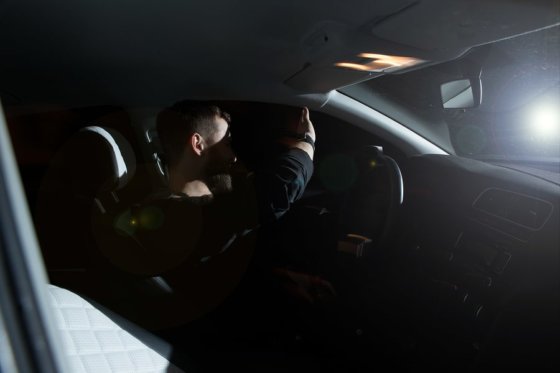
Whether because they didn’t get enough sleep the night before, took allergy medication, or are up earlier than usual, most Americans have driven while drowsy at some point in their lives. Feeling sleepy while behind the wheel is both uncomfortable and dangerous, and it can lead to tragic accidents.
Statistics
The Centers for Disease Control and Prevention (CDC) reports that driving while sleepy or fatigued is a significant, and growing, problem in the United States. Medications, alcohol, sleep deprivation, untreated sleep disorders, and long working hours can cause drowsy driving. The risks associated with drowsy driving are serious, and the consequences tragic.
Determining the amount of sleep needed by each person can prove challenging, as people differ in the amount of sleep they need, but drowsiness generally becomes apparent once you begin to drive. Consequences of attempting to drive while fatigued include:
- You are less capable of focusing on the road and other vehicles.
- Your reaction time will decrease in the event that you need to brake or maneuver quickly.
- Your decision-making ability will suffer.
According to the CDC report, an estimated one out of every 25 adult drivers had fallen asleep while driving within the 30 days preceding the study. The National Highway Traffic Safety Administration reports that an estimated 72,000 crashes, 44,000 injuries, and 800 deaths occurred in 2013 alone due to drowsy driving.
High-Risk Populations
According to the CDC, the following drivers are most likely to drive while fatigued:
- Commercial drivers struggling to meet strict delivery deadlines
- Drivers who did not get enough sleep in the preceding days
- Drivers who take medications that cause drowsiness
- Workers returning home from a night shift or particularly long shift
- Drivers with untreated sleep disorders
- Drivers traveling late at night
Warning Signs
Some of the most common warning signs of drowsy driving include:
- Missing an exit
- Hitting the rumble strip on the side of the highway
- Frequent blinking or yawning
- Drifting into another lane
- Realizing you don’t really remember the last few miles of driving
- Impaired vision
- Moodiness
- Trouble processing information
What to Do?
Sometimes fatigue is the obvious reason for an accident. In other situations, it may prove more difficult to determine if sleepiness played a part. According to the New York State Governor’s Traffic Safety Committee, there is no standardized test for drowsiness. If you are involved in an accident that you think the recklessness of a drowsy driver may have caused, take the following steps:
- If possible, move yourself and your car to a safe area immediately after an accident.
- Stop your vehicle and wait for assistance and the police, if needed.
- Check on any other individuals who were in the accident.
- If the police do not arrive in a timely manner, or if it is an emergency, call 911 for help.
- Gather as much information as you can while at the scene, including:
- The names of the other vehicle’s driver and passenger(s)
- License plate numbers
- Eyewitnesses’ contact information
- Names and badge numbers of responding officers
- Insurance information
- Accident location
- Makes and models of all automobiles involved
- If possible, take pictures of the accident scene, any property damage, and any injuries.
- Avoid signing any releases or other documents until you retain an attorney.
Accident Reports
Under New York law, people must file an accident report for any collision that results in at least $1,000 of property damage, and they must file the report within 10 days from the date of the accident. If the accident only resulted in property damage to one or more of vehicles, the drivers must share with each other information regarding their driver’s licenses, car registration, and insurance coverage.
If a parked vehicle or other property is damaged, or if a domestic animal is injured, the person at fault for that damage or injury must locate the owner or contact the police. If the property damage caused by the accident exceeds $1,000, all drivers involved must file a report of motor vehicle accident form within 10 days from the date of the accident. If you fail to file one of these reports, the DMV may suspend your driver’s license.
Finally, if an accident results in a fatality, the other people involved must notify the police immediately. Leaving the scene of an accident that causes injury or death constitutes a violation of New York law, and can result in criminal charges.
Hiring an Attorney
If you or a loved one sustained an injury due to another person’s negligence, contact an attorney immediately. Never attempt to negotiate directly with insurance companies. Having an experienced personal injury attorney on your side will help ensure the best possible result.
Common injuries associated with drowsy driving accidents include:
- Broken bones
- Traumatic head injuries
- Back and spine issues, including paralysis
Personal injury law in New York, particularly when determining who was at fault for an accident, presents huge challenges. New York is a no-fault jurisdiction, meaning that individuals who have insurance are, in most cases, reimbursed by their own insurance company for damages, even if the other driver caused the collision. The insured party can recover compensation for medical expenses, as well as other losses that might come to light following the accident.
To file a claim against the at-fault driver, your injury must qualify as serious under New York law. This means:
- Death
- Dismemberment
- Significant disfigurement
- Fractures
- Death of a fetus or miscarriage
- Permanent loss of use of a body organ, member, function, or system
- Injuries that prevent you from performing substantially all of the material acts that constitute your usual and customary daily activities for not less than 90 days during the 180 days immediately after the accident.
Call Ivan M. Diamond if a Drowsy Driver Hurt You
If you or a loved one is in a serious car accident in the Bronx, call the Ivan Diamond Bronx Personal Injury Attorney today at (718) 588-2000, or contact Mr. Diamond online, for a free case review. Mr. Diamond has more than 20 years of experience assisting car accident victims with their personal injury claims. He is willing to meet with you in your home or at the hospital, and he is available for evening and weekend appointments. Reach out today!



